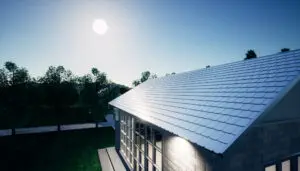By John Lorinc
 My wife and I live in a 110-year-old semi-detached house in midtown Toronto. Like many homes across the country, the walls are brick and thus uninsulated. We’ve chipped away at draft-causing gaps over the years, but given, well, climate change, we needed to go a big step further and significantly cut our natural gas consumption.
My wife and I live in a 110-year-old semi-detached house in midtown Toronto. Like many homes across the country, the walls are brick and thus uninsulated. We’ve chipped away at draft-causing gaps over the years, but given, well, climate change, we needed to go a big step further and significantly cut our natural gas consumption.
When the federal Liberals announced the Greener Homes deep retrofit program, back in the 2021 budget, we decided to take the plunge and enroll, hoping to tap some of the $5,000 in grants available to homeowners.
About a year and a half later, we crossed the retrofit finish line, with a range of moves, from stopping up some of the leaks in the walls to the purchase of a pair of big-ticket items: a high-efficiency electric water heater and a hybrid air-source heat pump, including the electrical upgrades required to handle them. From a climate perspective, the investments are worth every penny as our home’s carbon emissions will be about 80% lower than they were previously. From a money-saving perspective, we’re already seeing lower gas bills, and a $2,200 rebate cheque (16% of our capital cost) should arrive, well, eventually.
The Canada Greener Homes Grant, and the accompanying low-interest loan, belong to the smorgasbord of incentives that aim to nudge Canadians’ dwellings in the direction of our Paris Agreement targets. Some provinces – B.C. and Quebec, for instance – offer generous inducements alongside Greener Homes, while others – notably Ontario – do very little. By contrast, Italian homeowners can get 110% of their retrofit costs covered, meaning they’re not out of pocket when they decide to cut their residential carbon.
Italy’s program (more about which in a moment) raises a critical philosophical question: if society agrees that it needs to slash building-related carbon, which accounts for up to 40% of global emissions, should individuals shoulder the financial burden?
“The retrofit industry that we have, with its emphasis on do-it-yourself, finance-it-yourself, manage-it-yourself, is not the retrofit industry we need,” says Corporate Knights director of research Ralph Torrie. “The homeowner should not have to finance retrofits any more than they are asked to finance the next power plant.”
Climate retrofit mission
Consider the statistics: there are almost eight million detached homes in Canada, and the Greener Homes inducements won’t touch the vast majority. The program has attracted about 170,000 applications (as of June 2022), with almost $40 million in grants distributed so far to approximately 10,300 households, for an average of $3,750.
The five-year program has a $2.6-billion budget, with a target of 700,000 homes. That figure is less than 10% of Canada’s housing stock and doesn’t include condos or rental apartments. “The retrofit imperative is so huge,” says Monte Paulsen, a Passive House specialist at RDH Building Science in Vancouver. “We can’t decarbonize without a massive scale-up. We’re going nowhere near fast enough.”
Canada is not the only country to grapple with the question of how to accelerate its pace of housing retrofits sufficiently to significantly bend the building emissions curve.
Leave a Reply